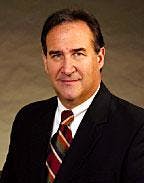The US oil and gas industry has moved into 2006 fully expecting the past year’s political turbulence to continue.
Trade association executives came into 2005 with passage of a comprehensive federal energy bill as their primary goal. One year later, many hope that supply interruptions and the gasoline price spike following Hurricane Katrina won’t lead to punitive legislation.
“I think 2006 will be a lot like 2005. It certainly won’t be a year of the status quo,” American Petroleum Institute Pres. Red Cavaney maintained.
One key lesson for the industry this past year has been that it has not told its story well and was being penalized in the public policy arena as a result, he said.
API has responded with “Energizing Life: The Story of Oil and Natural Gas,” a video that explains oil and gas exploration, production, transportation, refining, distribution, and products.
“The last time Americans had to pay attention to energy was in the 1978-79 Iranian supply interruption. An entire generation has grown up without facing an energy crisis,” Cavaney said.
National Petrochemical & Refiners Association Pres. Bob Slaughter testified before Congress five times last year, both leading up to passage of the Energy Policy Act of 2005 and following Hurricanes Katrina and Rita.
“The unceasing questions from the public and Congress, which are sometimes hostile, are part of the free market process. You have to explain why this country has adopted the policies that it has,” he said. “It’s obvious we have more work to do informing the public of the industry’s economics. Many House and Senate members who blamed the industry were simply relaying what they heard from their constituents.”
‘Do no harm’
Officials at the Independent Petroleum Association of America want to make certain that the second session of the 109th Congress produces bills that “do no harm” to domestic oil and gas producers, Pres. Barry Russell said.
“We’re coming into a midterm election. Energy will be a continuing issue,” added Lee O. Fuller, IPAA’s vice-president of government relations. “We’re concerned about adverse legislation, with three votes already on windfall profits tax proposals in the Senate. On the positive side, a lot more attention is being paid to offshore natural gas resources.”
National Ocean Industries Association Pres. Tom Fry agreed that there was more discussion of possibly expanding access to gas resources along the Outer Continental Shelf.
“At the end of the day, it was still the same,” he said. “But a lot went on. Being a real part of the fuller debate for the first time in years was energizing.”
In mid-November, NOIA hired Jeffrey Krause as external affairs director to work with governors, state legislatures, and county officials.
Fry also spent much of last year speaking to local associations such as the Propeller Club, an association of local marine transportation firms based in Tampa, about the potential impacts of offshore oil and gas activity on marine businesses.
“As we watched what happened in Virginia and other states, we realized that a lot of what happens in Washington starts at the local level,” he said. “They have a whole different debate. They’re concerned about jobs and energy for local businesses.”
Donald F. Santa Jr., president of the Interstate Natural Gas Association of America, was pleased overall with 2005 energy bill provisions dealing with interstate gas pipelines. But he indicated that supply-access issues, onshore and offshore, still need to be addressed.
“We’re also very interested in the Alaska gas project, where the state still needs to reach agreements with the last two North Slope producers,” he said.
More projects, ranging from pipelines from Rocky Mountain production areas to LNG import terminals, have been proposed to bring gas to markets. “It probably won’t equal the pipeline construction boom of the 1990s, but it will be substantial,” Santa said.
Important step
Cavaney, who considers the 2005 energy bill an important step, said Congress should follow up by addressing the need for more access to onshore and offshore resources, increasing flexibility in the permitting process for new pipelines, and continuing to clarify downstream regulatory questions such as New Source Review provisions of the Clean Air Act.
All gas-supply options should be pursued, starting with increased access to resources, continuing with construction of LNG import terminals, and ultimately building a pipeline to the Lower 48 states from Alaska, API’s president said.
“We need that flexibility. We need to move gas from a regional to a worldwide fuel like crude oil,” he suggested.
Two US administrations aggressively promoted gas as the preferred industrial fuel while increasingly closing off public lands to its development, Cavaney said.
“If gas had come from a worldwide market with readier access, there would have been an earlier industrial adjustment without demand destruction in US chemical, fertilizer, and other industries,” he said. “There’s a classic picture being exhibited at existing LNG terminals, which are not operating up to capacity. This is a global commodity that we have to be willing to pay for.”
Cavaney finds “at least some receptivity” for increased OCS access. He considered efforts by Rep. John E. Peterson (R-Pa.) and others important but added that a cold winter with much higher heating bills for consumers potentially could make the issue more prominent.
“We are somewhat concerned about some gas-only leasing proposals that have been embraced by people who don’t know how the industry works,” said Cavaney. He’s concerned that some coastal states will be disappointed by a weak response from producers if such constraints are imposed.
“If a coastal state opts out of a moratorium and has potentially attractive resources, that’s one possibility. But if it’s limited to gas, how many companies will respond when they have other exploration choices around the world?” he asked.
Personnel questions
Producers moved into the new year still facing personnel questions ranging from developing qualified employees to getting Congress to financially support agencies that process leases and drilling permits.
Russell cited a Deloitte & Touche USA LLP study that found that the US upstream oil and gas business lost 1.1 million jobs the past 2 decades, that the average age for its remaining employees is 49, and that less than 1,000 students are projected to earn petroleum geology degrees this spring (OGJ, Jan. 2, 2006, p.31).
Fuller added, “At the same time that the industry is fighting for those 1,000 graduates, so are the federal agencies, which can’t be as flexible in their salary and benefits offers.”
Independent producers also are competing against major oil companies, while drilling contractors and oil field service and supply firms are finding it hard to find qualified employees, he said.
“Even though the numbers are back up, much of the expertise has been lost,” said Fuller.
Frederick Lawrence, IPAA’s vice-president of economic and international affairs, said, “It’s hard to find the quality of labor that’s needed, especially when the job sites are far from the major labor centers.”
As more gas is produced from unconventional sources, more wells need to be drilled, which increases labor demand further, he said.
“The situation won’t get any easier hemispherically. We’re all pulling from the same labor pools, especially for work far from heavily populated areas,” Lawrence observed.
Producers also consider adequate funding for government permitting agencies a critical issue. “The government has to have adequate resources to do its job,” Russell declared.
He noted that the 2005 energy act included money to fund a pilot program to improve drilling permit processing in nine Bureau of Land Management field offices and that IPAA would press to make this financial support permanent.
Responding to BLM Director Kathleen Clarke’s observation early last year that producers have submitted incomplete applications, Russell said, “There’s certainly an education process involved. One challenge is that new permit writers ask for information that the old ones didn’t.”
Fuller added, “The agencies keep trying to position themselves to withstand legal challenges. One of the pilot program’s objectives was to quickly identify environmental issues to be addressed so that all of the concerned parties can embrace the process early and make it more effective.”
Refining challenges
Hurricanes Katrina and Rita blew refining issues into the public spotlight last year.
Slaughter of NPRA noted that the energy bill contained tax incentives for additions to refining capacity, which he considers a significant help.
“The better economics of the last couple of years helped,” he said. “But many refining executives expect margins to return to more traditional levels. So the incentives are important.” He added that more than 1 million b/d of additional US refining capacity is in various stages of planning and construction.
Cavaney noted that much of the debate over the energy bill started over gasoline and heating oil supplies. “Ironically,” he said, “most of the downstream provisions were pitched overboard to get the bill passed. Then [Congress] had to address those very issues 4 weeks later.”
The energy bill at least eliminated the requirement for oxygenate in gasoline and tried to address the boutique fuels issue, API’s president continued. “There also was an acknowledgment that waivers could be appropriate, which proved essential a few weeks later.”
Consumers were shocked when prices jumped after Hurricane Rita struck, but Slaughter said markets clearly worked. Refineries damaged by the storm acted quickly to stabilize operations, others increased production, and imports rose.
“Imports came to this country because of the price signals from the market,” he said. “Once they arrived, they started to bring prices down.”
John C. Felmy, API’s chief economist and policy analysis and statistics director, said, “Consumers understand now that we are importing product because we don’t have enough domestic refining capacity.” He noted, however, that refining margins collapsed in November and December, tempering investment prospects.
Nevertheless, said Slaughter, “all of the companies are looking at increases” in refining capacity. “Based on the better economic returns of the last 2 years, we’re likely to see more of an uptick in capacity. We tried to carry that message when folks asked why there wasn’t more capacity.”
OCS plan
NOIA plans to continue the effort to make the US Minerals Management Service’s new 5-year plan broader than its predecessors.
“We spent a lot of the past year working that issue and eagerly await the draft plan early in 2006,” said Fry. “Once a 5-year plan is adopted, it can take 21⁄2 years to change it. That’s why, for instance, we want areas such as Bristol Bay and the North Aleutians included, even though they’re under moratoria or presidential withdrawal, because the situation could change.”
Like onshore producers at the BLM, offshore producers continue to face proposals to charge for processing permits at the MMS. “One problem with these rules is that companies paid for these leases with bonus bids at the front end. There shouldn’t be additional charges,” Fry said. “There also are times when permits have been held up. MMS usually processes them promptly when other agencies cooperate. But in these days of decreasing federal budgets, it may develop funding problems. We will encourage Congress to fund it adequately.”
But Fry also expects the offshore oil and gas debate to continue in 2006. Senate Energy and Natural Resources Committee Chairman Pete V. Domenici (R-NM) has indicated he wants to address the question of increased OCS access quickly, while House Resources Committee Chairman Richard W. Pombo (R-Calif.) plans to offer his own bill, Fry said.
So while OCS access didn’t increase last year, NOIA’s president has entered 2006 encouraged. “It seems short-sighted to me that we import what we could produce at home. The debate has changed for the better because the end-users are speaking up. They have become exceedingly aware of shortfalls in our energy policy, particularly encouraging natural gas use but not its development,” he said.
While NPRA also has actively supported improved access to federal land out of concern for gas supply, Slaughter is concerned that 2006 could produce punitive legislation instead if prices climb too high or supplies grow too tight. “Frankly, it is setting up to be the kind of year that it would be better for gas not to be a prominent issue,” NPRA’s president said.
For interstate gas pipelines, the biggest immediate issue of 2006 will involve reauthorization of the federal pipeline safety act. Santa said the climate is significantly better than the last time because there haven’t been any major incidents.
He also sees increasing interest in global climate change, as evidenced by the proposal last summer from Senate Energy and Natural Resources Committee Chief Minority Member Jeff Bingaman (D-NM) for pipelines to be regulated climate change entities.
“While the pipeline industry is a small part of the global climate change question, we’re tuned into it,” INGAA’s president said.✦






